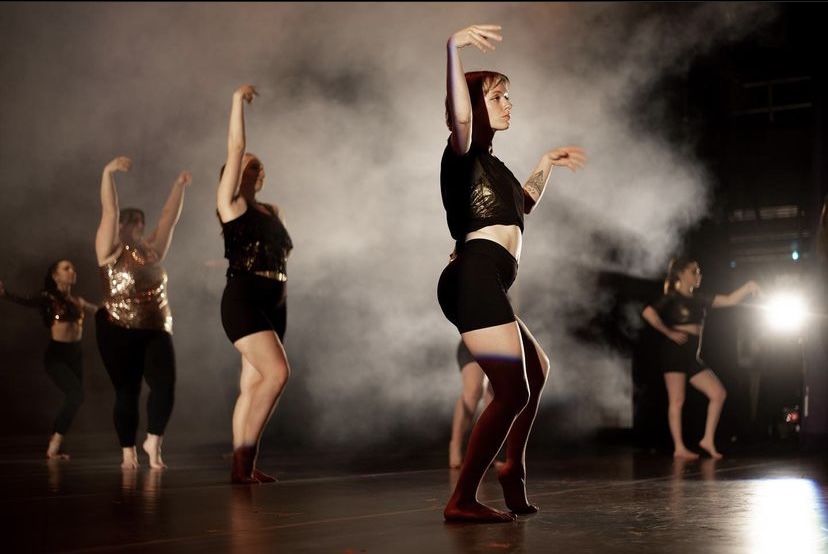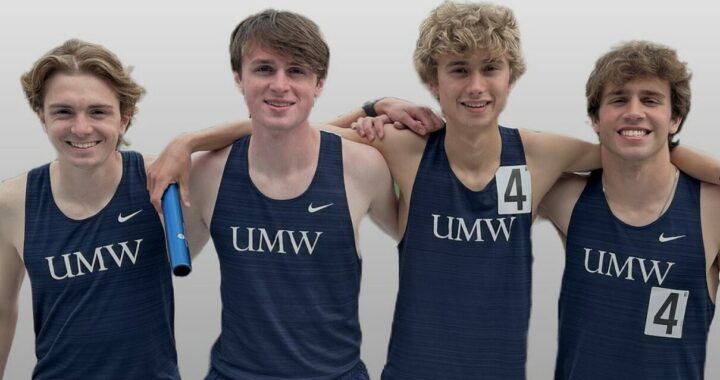Performing Arts Company PACs the house
3 min read
Senior Talia Tanner, an environmental science and geography major, in the senior dance titled “Vogue.” | Photo courtesy of Kacie Waters Heflin
NORAH WALSH
Associate Editor
On April 7 and 8, UMW’s Performing Arts Company performed this semester’s Big Show. The show was both physically and creatively demanding on the performers, with long hours and extensive choreography requiring weeks of work and rehearsal to prepare.
Auditions occur the first weekend of every semester, and they determine who will be part of the company and therefore perform in Small Show and Big Show as a member.
Membership in the company varies from novice to expert, with some dancers just entering the dance world and others very familiar with it.
“I only recently joined PAC the spring semester of my junior year, and it has been absolutely amazing just getting an opportunity to re-enter myself into the dance world but in a really inclusive space,” said Ellianna Bowman, a senior studio art major who is a dancer and choreographer for the company. “And also with a really great group of people and friends who have the same love and passion for moving their bodies and creating and dancing but who just want to do it in more of a low-key, friendlier setting.”
To choreograph for Big Show, members need three semesters of being a member and prior experience choreographing for Small Show. This final event of the semester signals the end of their rehearsals, but “PAC still offers workshops and community outreach opportunities but show specific rehearsals are done,” said Madeline Brunt, a junior biology major on the pre-vet track.
When it comes to brainstorming dances for the shows, the choreography begins before the semester starts, Brunt said. “Members who are eligible to choreograph submit proposals to the current officer board to review.”
The officers use their discretion to select the dances, though. “Acceptance is based on priority, style, length, number of dancers, available concert time, attendance and engagement in the club,” said Brunt.
Each choreographer has their own process for creating a dance.
“As a choreographer, I start with usually finding a song, and it’s usually a song that I like or listen to that my body responds to and I want to start dancing to,” said Bowman. “I usually end up spending a lot of time trying different sequences and seeing if they feel right with the music and with the weight distribution of my body and just truck through it.”
Like other forms of art that require constant practice, dance is no different. “There’s a lot of workshopping; it’s a lot like any sort of creative art form, like writing a paper or building a sculpture or something,” said Bowman. “There’s a lot of sketching and redoing in the process.”
This process of workshopping is like practicing for a game that’s coming up or a regional competition, for Big Show and Small Show serve as events during which the dancers’ hard work has a platform to be performed.
The hours a dancer has to rehearse depends on how many dances they are in, with one hour per dance a week becoming a strenuous process if selected for a number of dances.
“During my busiest time this semester, I was rehearsing around 8 hrs a week,” said Brunt. “6 of those hours were set rehearsal times for dances and 2 hrs were collaborating with my co-choreographer, Keona May, for our Big Show dance.”
Even those coming in with less experience, Wilhemina Solley, a junior theatre and psychology major, said, will find an accepting and welcoming environment in the company.
“Before UMW, my dance experience was limited to the ‘Just Dance’ games on the Wii, but I was on the now non-existent UMW Dance team my freshman year,” she said. “One of the great things about PAC is they really are ready to work with all skill levels and help build you up, even if you don’t have dance experience.”
Other dancers have a lifetime of experience. “I have pretty much danced my entire life. I started dancing when I was 2 years old and danced all throughout elementary and middle school,” said Bowman. “In high school, I started to focus more on other things and stopped dancing quite as much, but I still always had a huge passion for dance.”










